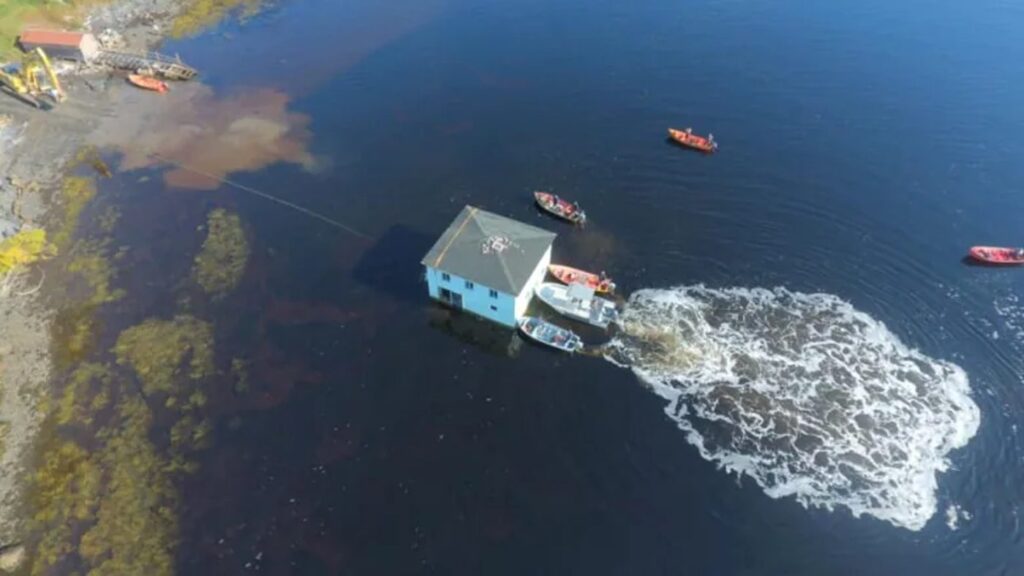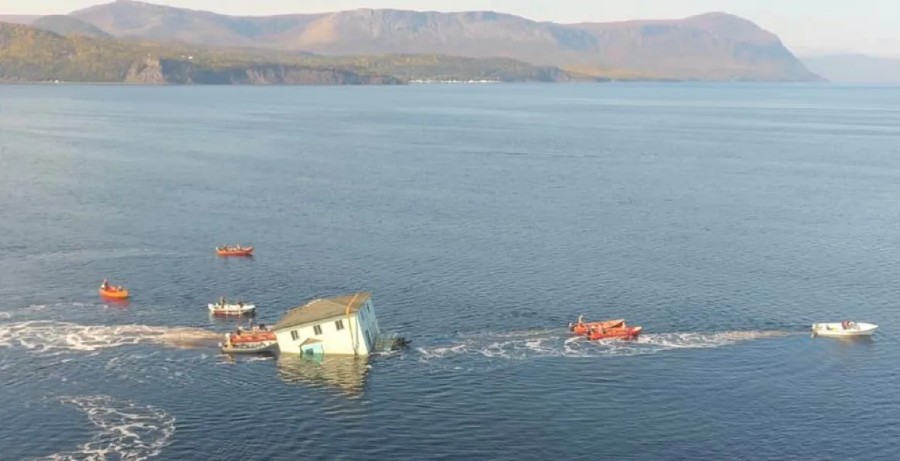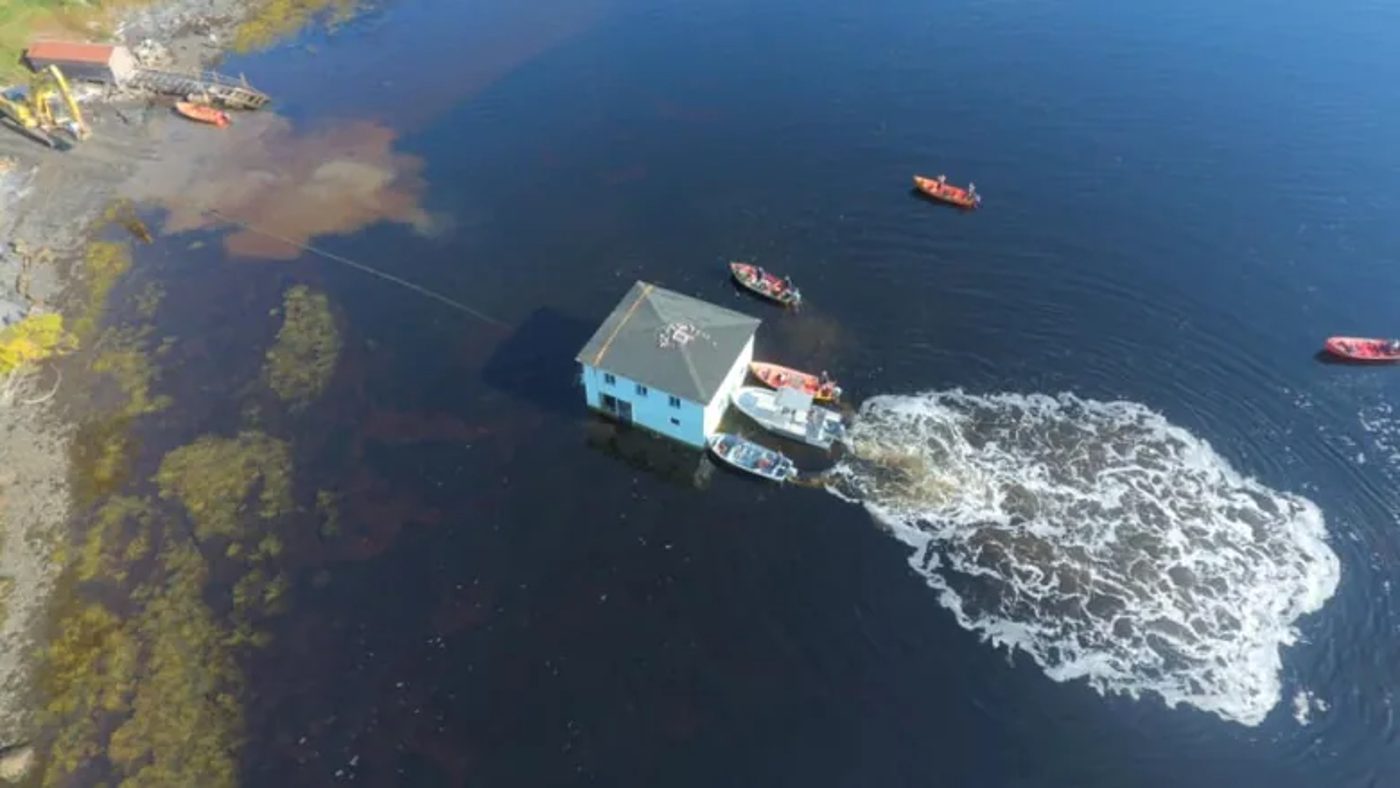
If a place that truly floated your boat was about to be torn down, you could try to move heaven and earth to save it—or, you could just move the house.
And that’s just what one determined couple did—but they didn’t take an overland route, they went by sea.
Daniele Penney fell in love with a two-story “biscuit box” house on the shores of Newfoundland’s Bay of Islands and longed to someday make it hers.
“It was the little green house on the point that I loved… I talked about it to my friends, my family. Everybody knew that my heart always belonged to this house,” Penney told CBC.
When Penney learned the home had been sold this past June and was slated for the wrecker’s ball, she and her boyfriend Kirk Lovell came up with an alternative solution. Rather than demolition, the couple asked the new owners if they’d allow them to relocate the structure to a different location and were given the go-ahead.
The logistics of moving the house overland weren’t in their favor, however, in Newfoundland, transporting various buildings across the local waterways had plenty of historical precedents.
During a government-sponsored resettlement period in the 1960s through the ’70s, seeing a home being hauled over the water was a fairly common sight along the coasts of Newfoundland and Labrador, but the practice goes back even further than that.
“My mother was born in a house that was transported from Cape Breton across the Canso straight to Mulgrave on the Nova Scotia mainland back in the 1910s,” CBC reader Murray Brown noted in a comment. “That house is still standing to this day.”
Prior to the move, the house was stripped to its studs, and holes were drilled in the flooring to allow any water that got inside to quickly drain.
Next, it was lashed to a frame and placed on a series of floatation devices, including barrels and old tires, and launched into the water for the move to its final destination in the town of McIvers, about one kilometer away.
Guided by a small convoy of dories, the shore-to-shore journey took eight hours. For one heart-stopping moment, the house listed, one of its corners sinking precariously into the bay at the same time Lovell’s boat lost power.

But just as it looked as if the beloved green biscuit box houseboat might go the way of the Titanic, a fleet of neighboring fisherfolk with small boats swooped in to help right the precious cargo.
MORE: Rent Winnie the Pooh’s Tree House in the Original Hundred Acre Wood at This ‘Bearbnb’
“All of a sudden, there [were] dories coming from everywhere,” a grateful Penney told CBC. “The community definitely stepped up to help us get this house over.”
As friends and neighbors gathered to monitor the flotilla’s progress and cheer things on, “Operation House Float” became a true Newfoundland affair.
“Went to watch this unfold yesterday when we heard. I thought she was a goner for a few minutes. You should see it in its final resting place. Absolutely beautiful. Amazing that people did this often years ago,” CBC reader Haley Jesso proclaimed.
“You followed your dreams and I could not be happier for you,” added Lori Patrick. “I love that the extra dories saw your predicament and came to lend a hand. True Newfoundlanders!”
LOOK: This Simple 10-Question Word Test Reveals How Creative You Are
Although the house did take on a great deal of water during its voyage, the drainage holes seem to have done their job. Penney, Lovell, and their 6-month-old daughter, Harper—who are currently living in a trailer during the drying out and renovations—hope to be able to make the home their own once everything’s back in ship shape.

So while we’ve heard it said that hope floats, it’s nice to know that when it comes to saving the house of your dreams, home floats too.
(WATCH the video to see the boat being pulled below.)
FLOAT Your Mates’ Boats With This Fun Story…




















